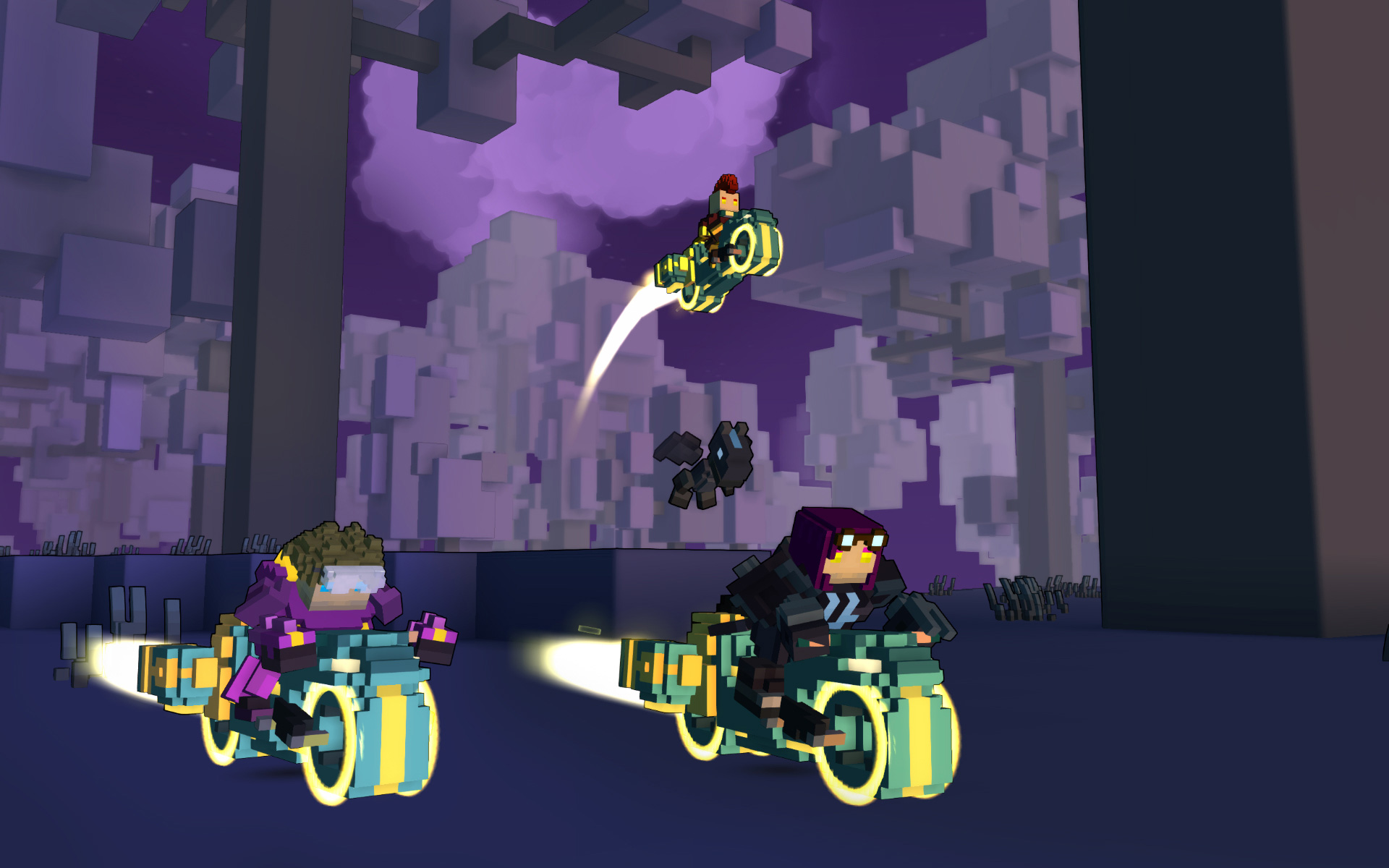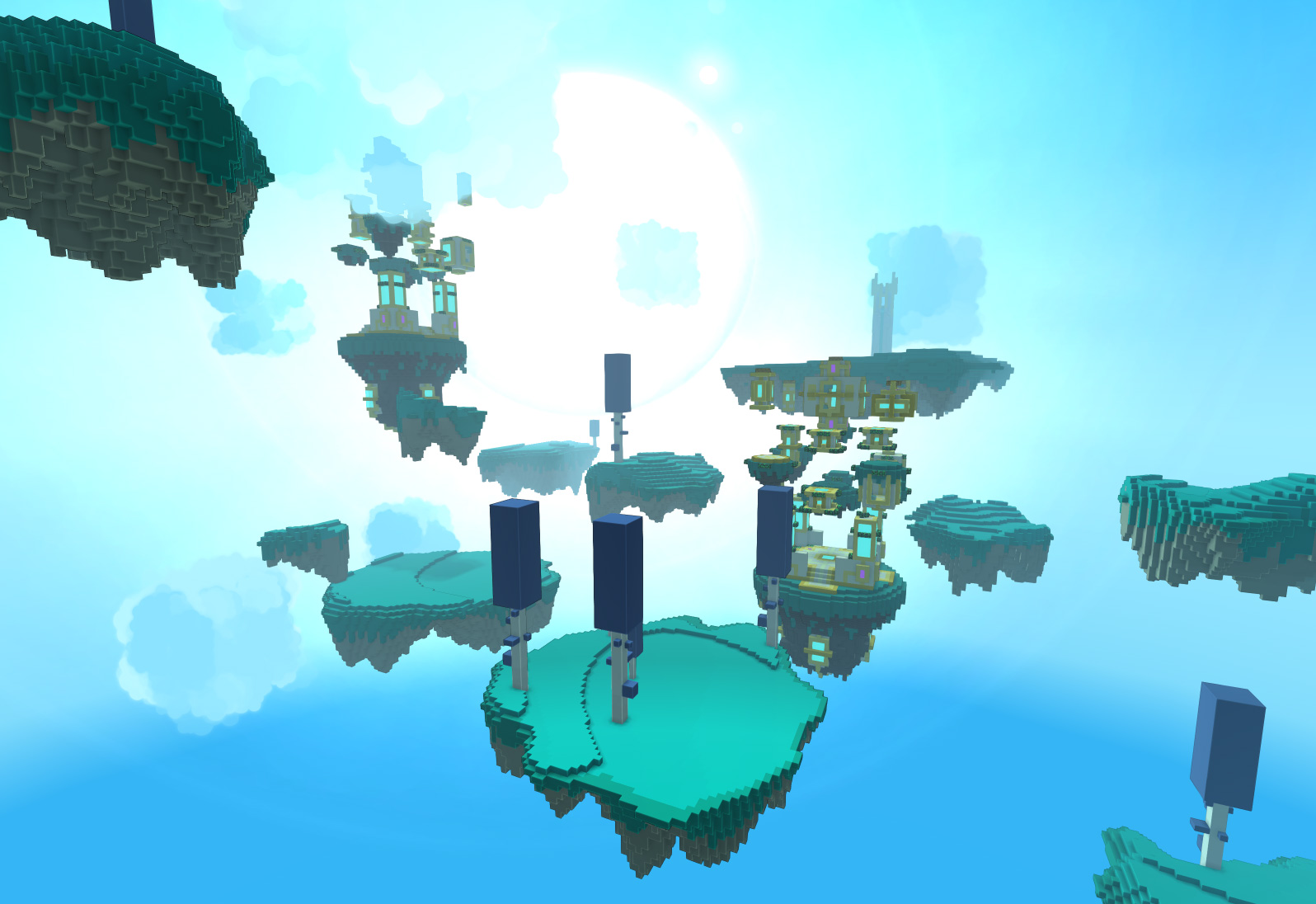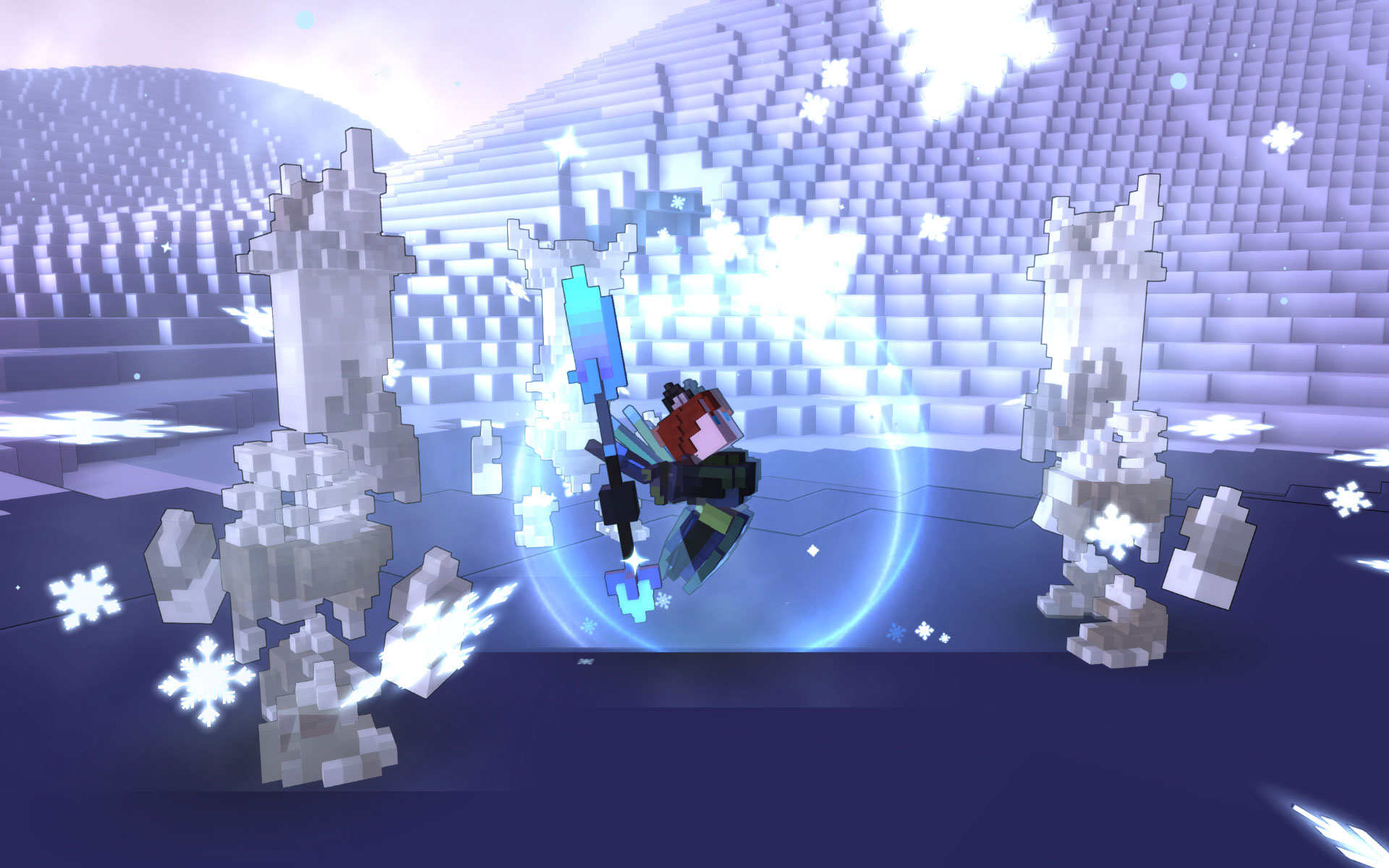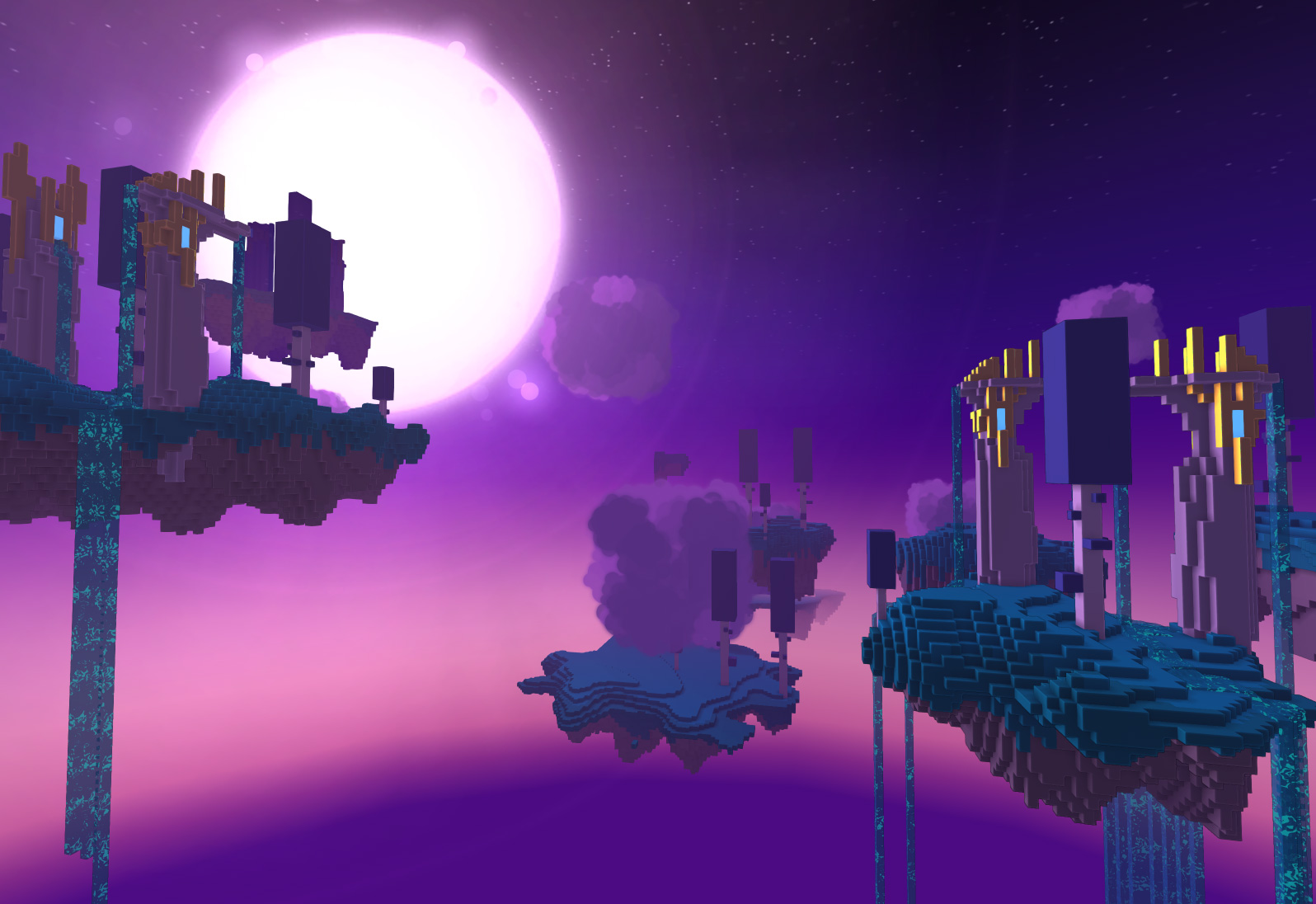Trove mixes MMOs and Minecraft for a unique adventure

We’ve all seen them, those suspicious Minecraft clones on the fringes of web ads and Steam Greenlight. It seems like a new one pops up every week. Who could forget the wholly original Block Story, 3079: Block Action RPG, or Guncraft?
Into this bramble of voxels comes Trove, a new Minecraft-style MMORPG from Trion. After spending time with it, what’s surprising is how much Trove does to set itself apart from the pack, merging some semi-inventive play styles with a wildly varied world to explore. By the end of my time with Trove, I was a laser beam-shooting pirate with a cannon-mounted parrot companion struggling to defeat killer cupcakes.
It’s a mad, blocky world
Trove begins in classic MMO fashion, inviting you to select a character class from some amusing but mechanically familiar options. There’s the melee-heavy Candy Barbarian, the quick-footed Neon Ninja, and the magical Fae Spellcaster or Ice Sage. There’s even an undead necromancer that reanimates minions to tank damage while you cast spells from afar. I was happy to fall into my character of “slightly unhinged seadog in a kabuki mask,” but given the game’s free-to-play nature, I was only allowed to unlock one additional class after a few hours commitment. The rest remain locked until you fork over about $10 in real-world money or a few hours of extra grinding.
Equally eclectic as Trove’s character designs, its environments are a blend of game world stereotypes split into different biomes. One minute you’re grappling with giant mushrooms in an enchanted forest, and the next you’re walking through candy cane trees and cake mountains in the land of Candoria. You can skewer the captain of a pirate ship manned by parrots, punch a robot in Neon City, or fly over and under the floating islands of Sky Realm. I’ve dabbled in Minecraft’s modding scene plenty, but I never battled a sundae cenobite atop a giant gumball machine.
As fully realized as all these areas are, it’s a little jarring to be adventuring through a frozen tundra and suddenly land next door in a verdant forest. It’s a mishmash of cool ideas, rather than a cohesive whole. It keeps things fresh, but at the expense of feeling like a genuine explorer.

While one half of Trove is pure adventuring and discovery, the other is focused squarely on crafting and loot hunting. As you might expect, a lot of this crafting comes as the result of relentless resource mining. Switching effortlessly from combat mode to mining, a handy laser lets you automatically scoop up veins of ore and place blocks from a distance. While you’re still vulnerable to enemy attacks, the ease of mining drastically reduces the time needed to craft gear, items, and eventually your own abode.
Your most important instance of creation begins with a ‘cornerstone,’ a home you can modify and fill with a ridiculous number of workbenches that open up further options for crafting. Rather than restrict you to one location, however, Trove allows you to instantly teleport your home to one of many designated plots of land, usually close to starting zones or quiet corners devoid of enemies. Random players and monsters can wander into your abode at any time, and a misplaced bomb can knock out a precious wall or forging station. Visiting a fellow player’s home actually ends up being incredibly helpful, especially at early levels. You’re free to use a majority of another player’s workbenches and forges to craft to your heart’s content. Each plot is the same size, but players are able to create some truly monolithic households, complete with waterfalls and all the beast trophies a bowman could ever want.
The biggest gaming news, reviews and hardware deals
Keep up to date with the most important stories and the best deals, as picked by the PC Gamer team.
My days of journeying on horseback involved a lot of random wandering, crying out for a health recharge station.
It makes sense being able to take your home with you, given that the map isn’t always as helpful as it could be. Cornerstones aren’t marked, while numerous dungeons litter the in-game compass, and many of those feature entrances that are awkwardly difficult to find. While hunting for ore deep underground, I’d receive mission objectives like ‘slay the Fungal King,’ only to search in vain without realizing the boss was almost always above the surface. Suffice to say, my days of journeying on horseback involved a lot of random wandering, crying out for a health recharge station.
Loot for days
We all enjoy the time-honored sandbox game tradition of ignoring everything and running off in one direction for miles. This is an experience that Trove supports nicely. At times, it felt like Trove’s world really was endless, filled with enough loot between crafting and dungeon raids to entice even further exploration. The only thing endless about Trove’s inventory is the minor bouts of frustration resulting from an unclear layout. Reminiscent of The Witcher 3’s relative complexity and Minecraft’s simplistic resource grid, Trove lands square in the middle, attempting to provide a level of intricacy at odds with its approachable decor. Much like how The Witcher 3’s inventory was a jumble of everything you ever picked up (before a patch some weeks later), there’s no rhyme or reason to where items end up in your little backpack.

It’s easy enough to burn through excess items with the loot collector, another workbench of sorts that converts items into crafting materials, and it would be perfect if not for that disorganization. Most items I encountered had a mix of positive and negative stat effects, so it’s impossible to feel comfortable making that call to swap something out. I was never quite sure if the level of magic damage or kickback of a gun mattered, or why it gave me some sort of health boost. There’s a beauty in being dropped into the world and told to make things happen, but it’s an approach that doesn’t totally work when dealing with tons of stats and variables.
One major saving grace is the ability to unlock and assign a style to your equipped weapon or item. While you’re inevitably swapping in higher level items, it will never affect the physical look of the item. It’s the inverse of a system like The Witcher’s, where any upgrade to your armor could result in Geralt wearing some unflattering tassels as opposed to the perfectly awesome armor he started out with. If I’m a cutthroat pirate, the last thing I want to brandish is a sunflower gun. It’s a customization scheme that works remarkably well, considering I never saw a player who looked like another player’s twin.
Let’s go clubbing
Clubs in Trove are definitely where the game’s true future resides, allowing large groups of players to create and maintain their own unique worlds, and it’s here where the creative element really shines. Some worlds are so vast as to necessitate their own rail system, complete with the ability to implement full-length synthesized music onto the physical track. Via musical boxes collected and placed underneath, simple techno beats or even grand orchestrations like Skyrim’s Dragonborn theme can be achieved.
Visitors to club worlds can leave ‘best of’ votes during their visit, giving a surprisingly large incentive to create with a purpose in mind. The more votes you receive, the more likely your club world is to appear in the main game hub for new players to wander into.

Trove excels at giving players a fully realized, customizable world, but it’s the small details in the game’s menu structure and user interface that bog it down. It’s easy to get lost in the countless player-created and official worlds, but also a chore at times to determine what your next objective dictates. It wouldn’t hurt for Trion to add a little more handholding or restructure some of the menus to mitigate the confusion felt early on.
The beauty of Minecraft isn’t what the developer leaves behind for you, it’s what you make of the tools provided, and Trove towers over its competition on the breadth of its colorful and surprisingly dense landscapes. Mountainous candy vistas, sunbathed levitating islands, and gaping chasms overflowing with water never before looked so appealing when made of voxels. I’m excited to explore new worlds developed by an enthusiastic fanbase and those still under construction, but there’s ultimately little convincing me to pitch in as a newcomer.
Joseph Knoop is a freelance writer specializing in all things Fortnite at PC Gamer. Master of Creative Codes and Fortnite's weekly missions, Joe's always ready with a scoop on Boba Fett or John Wick or whoever the hell is coming to Fortnite this week. It's with a mix of relief and disappointment that he hasn't yet become a Fortnite skin himself. There's always next season...


